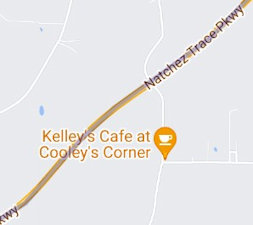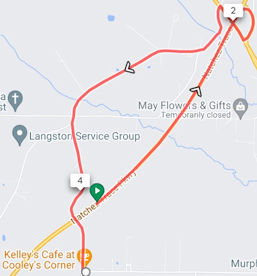Many of the roads that cross the Natchez Trace use overpasses or underpasses, and are therefore not accessible to cyclists from the Trace.
While you are looking at maps to plan your travel, it can be very hard to tell which roads are accessible and which are not.
For example, while looking at a map you might decide that this looks like a great place to stop for lunch:

... but when you get to that road, you'll find that it's only an overpass, and the only way to get to that business is like this:

To help you avoid surprises like this, on most maps throughout this webside you'll see this option:

When this box is checked, the map will include markers to indicate where an accessible road intersects the Trace.
Most of these roads don't go anywhere that you want to go, but this gives you an easy way to see which of the crossroads are even available.

indicates a road or highway

indicates a parking area or pull-off which does not connect to local roads
On a computer, you can hover your mouse over the access point to get a pop-up with the name of the crossroad or pull-off area.
